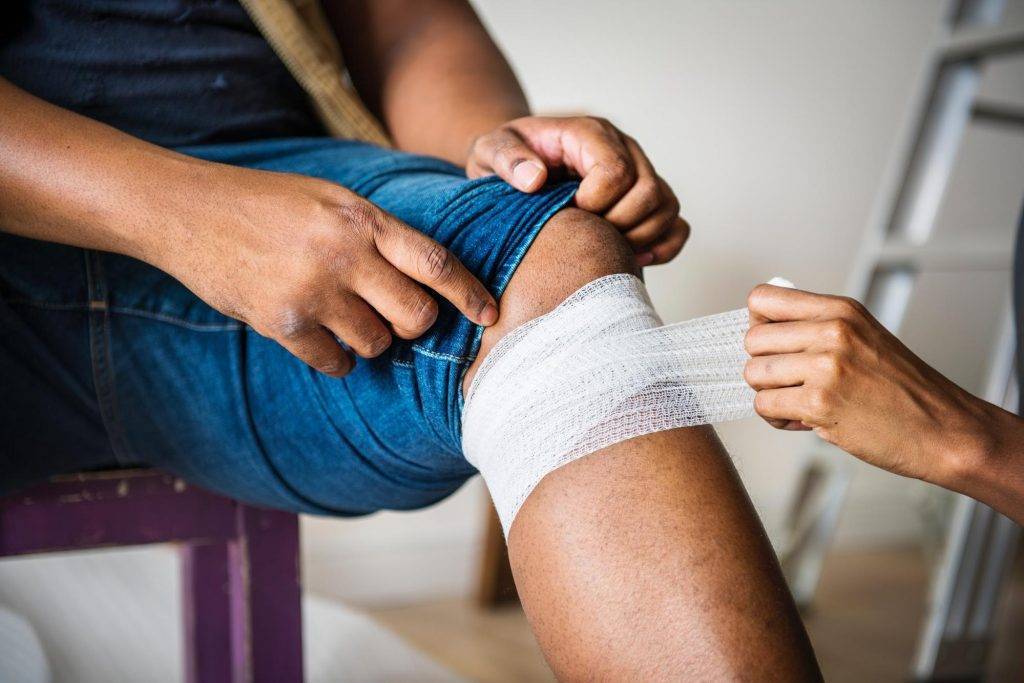Tips to Keep Your Knees Healthy

Knee problems are common, especially in older adults. It can become harder to walk, climb the stairs, or get into and out of a chair. The joints may swell and cause pain.
Your knees are the largest joint of the body. As such, they sustain a lot of wear and tear over the years. Aging, excess weight, injury, osteoarthritis, and lack of muscle strength contribute to knee issues.
One of the best treatments is prevention. Preventing injuries and taking care of your knee joints can help keep you mobile and pain free.
Read on for a list of the best ways to keep your knees healthy as you age.
How Knees Age
With every step you take, your knees are fighting against gravity and absorbing pressure. Over time, knee cartilage breaks down causing pain and swelling. The muscles and ligaments get weaker. Your activity level, genetics, and past knee injuries affect how your knees age.
Common Knee Injuries or Problems with Age
Common symptoms of knee problems include:
- Pain
- Swelling
- Stiffness
- Redness
- Popping or crunching sounds with movement
- Weakness
- Inability to straighten the knee fully
Knee injuries, medical conditions, and other factors play a role in the health of your knee. Common injuries include an ACL injury, torn meniscus, bursitis, tendinitis, or a fracture. Although the injury may have occurred in the past, the bones, joints, ligaments, and muscles surrounding the knee may have been affected. The damage can be long-lasting.
Also called wear and tear arthritis or degenerative arthritis, osteoarthritis involves the deterioration of cartilage in the knee joint. Osteoarthritis is more common with age and affects women more than men.
Tips to Keep Your Knee Healthy
Knee pain, or the treatment of it, does not have to interrupt your daily life. Consider the following tips to reduce the stress on your knees, minimize the risk of injury, and to protect your knees as you age.
1. Maintain a Healthy Weight
Obesity or excess weight contributes to knee pain, injury, and arthritis. It puts extra pressure on your knees and can cause complications such as increased inflammation.
Weight loss can help lessen the load on your joints. Each pound you lose reduces the stress on your knees. Maintaining a healthy body weight is not only good for your overall health, but also the health of your knees.
2. Stay Active by Walking or Biking
When the cartilage in the knee becomes damaged or worn, patients experience pain, stiffness, and problems moving. Low impact exercise such as walking or biking helps rebuild the joint and strengthen the legs. Additionally, walking helps patients lose weight and stay active.
Try to walk or get exercise for 30 minutes per day several times a week to strengthen your knees.
3. Strengthen the Muscles Around Your Knees
While it is often tempting to avoid exercise and movement when your knees hurt, sometimes that isn’t the best solution. Certain strengthening exercises can actually alleviate your current pain and prevent future problems by giving the knee extra support.
The Academy of Orthopedic Surgeons notes that strong, flexible muscles help keep the knees strong and healthy.
Consult your doctor before beginning an exercise regimen, especially if you are in pain. Once you are cleared, consider doing leg lifts, hamstring curls, step exercises, chair dips, or wall squats to strengthen the muscles throughout your legs.
4. Stretch Your Muscles
Stretching the muscles in your legs can help provide relief from knee pain. Stretching can help loosen the muscles, reduce stress on your joints, and improve your flexibility and mobility.
Knee stretches should target the muscles and tendons surrounding your knees. Several stretches are necessary to target each of the muscle groups around the knees. This includes stretching the quadriceps, hamstrings, calves, hip flexors and adductors, and the iliotibial band.
Do the stretches regularly for the best results.
5. Improve Your Posture
Poor posture can cause joint pain. Your posture is critical to the alignment of your joints including your shoulders, hips, and knees.
Sitting down, we tend to become lazy or relaxed which leads to poor posture. When in a seated position, avoid sitting on your knees as it can decrease blood circulation and place stress on the joint.
Instead, sit with your knees bent and feet on the floor. If you are sitting on the floor, bend your knees with your legs to the side or keep your legs stretched straight out in front of you. Try to maintain a neutral spine and change positions frequently to minimize knee and posture problems.
6. Pay Attention to Your Pain
If you do experience knee pain or problems, contact your doctor. Pain that does not go away or swelling around your knee needs to be addressed by a medical professional.
See Dr. Ahmad for Your Knee Pain
Dr. Ahmad is a board-certified pain physician who offers treatment for knee pain in Charlotte, NC. At Advanced Sports & Spine, we utilize a holistic, integrative approach to sports medicine and pain management. In addition to using the latest, most advanced technologies, we offer non-surgical, non-opioid treatment options. Treatment plans may also include dietary or exercise changes.
Contact Advanced Sports & Spine
For additional tips on how to keep your knees healthy or if you are experiencing knee pain, contact Advanced Sports & Spine for an appointment. Our goal is to improve your mobility and quality of life as quickly as possible.
